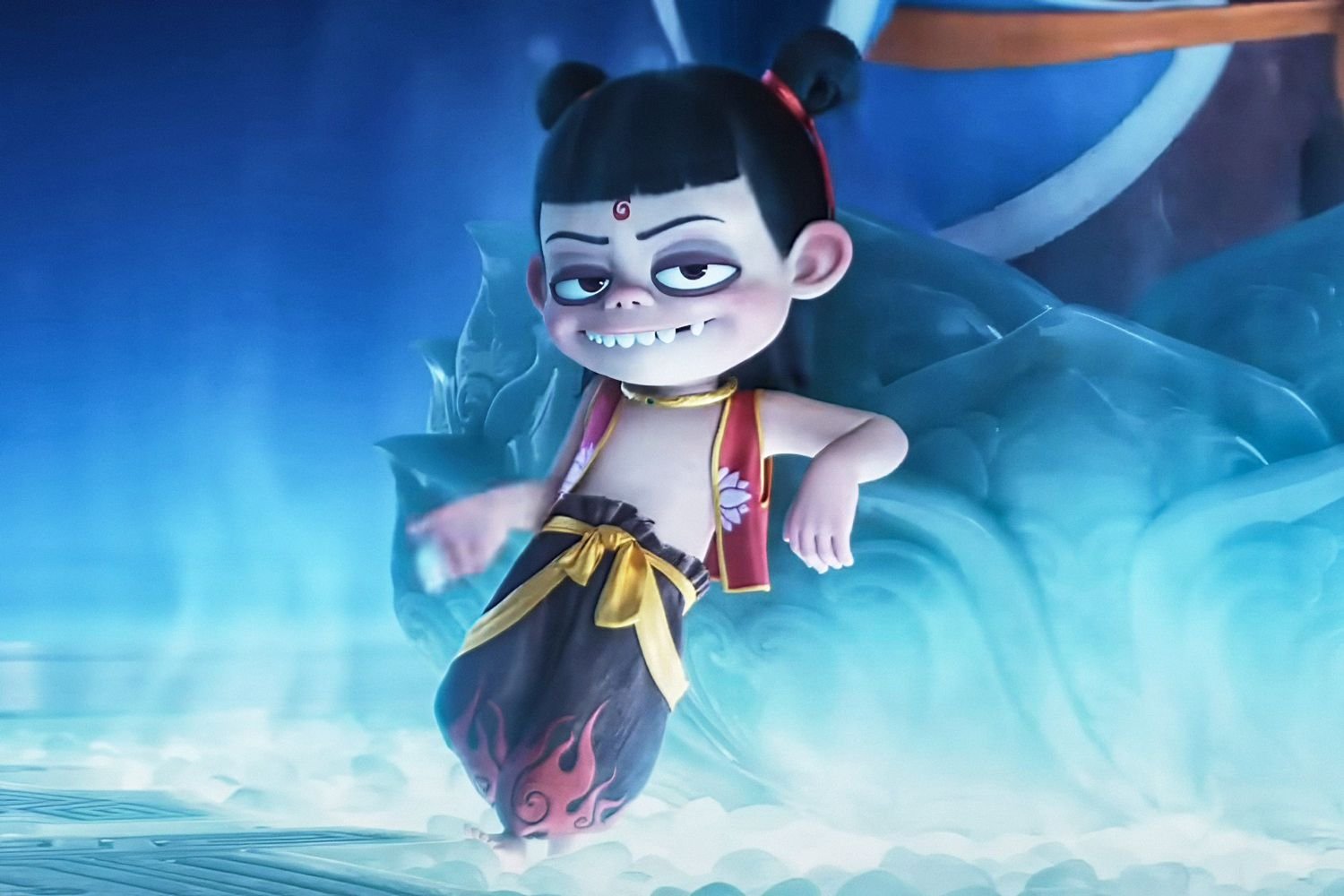
Live-Action Mulan Review: Stunning Looks, Weak Story
As a long-time fan of Disney’s animated classics, I was initially excited when I heard the news that the studio was producing a live-action remake of the beloved 1998 film Mulan. The original animated feature was a cherished part of my childhood, and I was curious to see how the studio would adapt the story for a modern audience. However, after watching the new live-action version, I can’t help but feel deeply disappointed by the final product.
The Allure of the Trailer vs. the Lackluster Reality
When the first trailer for the live-action Mulan was released, I, like many others, was captivated by the stunning visuals and the promise of an epic, action-packed retelling of the classic tale. The vibrant colors, sweeping landscapes, and impressive martial arts sequences had me eagerly anticipating the film’s release. The trailer made the live-action Mulan look like a visually stunning and thrilling cinematic experience.
Sadly, the final film fails to live up to the promise of the trailer. While the production values are undoubtedly high, with beautiful costumes, sets, and cinematography, the overall execution falls flat. The pacing is uneven, the emotional connections between the characters are lacking, and the action sequences, while technically impressive, lack the sense of excitement and engagement that I had hoped for.
Comparing the Animated Classic to the Live-Action Remake
One of the biggest challenges in adapting an animated Disney classic into a live-action film is capturing the same sense of magic and wonder that made the original so beloved. Unfortunately, the live-action Mulan falls short in this regard, especially when compared to the 1998 animated version.
The animated Mulan was a beautifully crafted film that balanced action, humor, and heartfelt emotion. The characters were richly developed, and the story resonated with audiences of all ages. In contrast, the live-action remake feels like a hollow shell of the original, lacking the depth and nuance that made the animated version so special.
One of the most glaring issues with the live-action Mulan is the lack of emotional investment in the characters. In the animated film, Mulan’s journey of self-discovery and her desire to protect her family were at the heart of the story. We felt a deep connection to her struggles and triumphs, and the relationships between Mulan and her family, as well as her fellow soldiers, were integral to the narrative.
However, in the live-action version, these emotional connections are largely absent. The characters feel one-dimensional, and the audience is left feeling detached from their experiences. The film’s focus on the grand, sweeping visuals and action sequences comes at the expense of the character development and storytelling that made the original so compelling.
The Disappointing Execution of the Action Sequences
One of the areas where the live-action Mulan was expected to excel was in its action sequences. The trailer promised breathtaking martial arts displays and thrilling battle scenes. Unfortunately, the execution of these action sequences falls short of the mark.
While the individual moves and choreography are technically impressive, the editing and pacing of the action scenes are often disjointed and lack the fluidity and cohesion that would make them truly engaging. The camera work, which often cuts away from the action or uses shaky, handheld shots, prevents the audience from fully immersing themselves in the spectacle.
In contrast, the action sequences in the animated Mulan were seamlessly integrated into the narrative, with a sense of energy and excitement that drew the viewer in. The audience felt a genuine connection to the characters and their struggles, making the action scenes all the more thrilling and impactful.
One particularly disappointing aspect of the live-action Mulan is the lack of a memorable musical score. The animated film’s soundtrack, with its rousing anthems and emotional ballads, was a crucial part of the overall experience. In the live-action version, the music feels generic and forgettable, failing to enhance the emotional impact of the story.
The Controversy Surrounding the Live-Action Remake
The release of the live-action Mulan has been mired in controversy, both before and after its debut. Even before the film hit theaters, it faced backlash from some audiences due to the decision to remove the beloved character of Mushu, the dragon sidekick from the animated film, as well as the lack of songs and musical numbers.
Additionally, the film’s lead actress, Liu Yifei, faced criticism for her comments in support of the Hong Kong police during the 2019 pro-democracy protests. This sparked calls for a boycott of the film, further complicating the already challenging task of adapting a beloved classic for a modern audience.
The film’s release was also impacted by the COVID-19 pandemic, which forced Disney to forgo a traditional theatrical release and instead debut the film on their streaming platform, Disney+, for a premium rental fee. This decision further alienated some viewers, who felt that the film’s cinematic experience was compromised by its digital-only release.
The Lukewarm Reception in China
One of the key factors in Disney’s decision to produce a live-action Mulan was the potential to appeal to Chinese audiences, who were seen as a crucial market for the film. However, the reception in China has been far from enthusiastic, with the film receiving a lukewarm response from both critics and audiences.
Part of the reason for this lukewarm reception is the film’s perceived lack of authenticity. While the production values are high, and the film features a predominantly Chinese cast, many Chinese viewers felt that the film failed to capture the true essence of Chinese culture and history. The decision to remove the character of Mushu, a beloved figure in the original animated film, was particularly controversial among Chinese audiences.
Additionally, the film’s political controversies, including the lead actress’s comments in support of the Hong Kong police, have further alienated Chinese viewers, who have been vocal in their criticism of the film’s perceived lack of cultural sensitivity and political neutrality.
The Missed Opportunity to Truly Celebrate Chinese Culture
One of the most disappointing aspects of the live-action Mulan is the missed opportunity to truly celebrate and honor Chinese culture and history. While the film’s production values are impressive, and the costumes and sets are visually stunning, the overall execution feels like a superficial representation of Chinese culture, rather than a deep and meaningful exploration of it.
In the animated Mulan, the cultural elements were seamlessly woven into the narrative, with the film’s themes of honor, duty, and family resonating with audiences around the world. The live-action remake, on the other hand, feels like it is simply checking boxes, rather than truly immersing the audience in the richness and complexity of Chinese traditions and beliefs.
This missed opportunity is particularly disappointing given the wealth of Chinese folklore, mythology, and martial arts history that could have been explored and celebrated in the film. Instead, the live-action Mulan feels like a generic, Hollywood-ized version of the story, lacking the depth and authenticity that could have made it a truly groundbreaking and culturally significant cinematic experience.
The Importance of Preserving the Magic of the Original
As a fan of the original animated Mulan, I can’t help but feel that the live-action remake has failed to capture the magic and essence of the beloved classic. While the film may have impressive production values and technical achievements, it ultimately falls short in the areas that truly matter – character development, emotional resonance, and the ability to transport the audience to a world of wonder and adventure.
The decision to adapt a beloved animated Disney film into a live-action format is a challenging one, and it requires a delicate balance of respecting the original while also bringing something new and innovative to the table. Unfortunately, the live-action Mulan fails to strike that balance, leaving audiences like myself feeling disappointed and longing for the magic of the original.
As Disney continues to produce live-action remakes of its classic animated films, it’s crucial that the studio takes the time to truly understand what made the original so special and finds ways to honor and preserve that magic, rather than simply trying to replicate the surface-level elements. Only then can these remakes truly succeed in captivating audiences and doing justice to the beloved stories and characters that have captured the hearts of generations.
Conclusion
In the end, the live-action Mulan is a disappointing adaptation of a Disney classic. While the film may have impressive production values and technical achievements, it ultimately fails to capture the magic, emotional depth, and cultural significance of the original animated film. The lack of character development, the uneven pacing, and the underwhelming action sequences all contribute to a cinematic experience that falls short of the high expectations set by the film’s trailers and marketing.
As a long-time fan of Disney’s animated classics, I can’t help but feel a sense of sadness and disappointment in the live-action Mulan. The missed opportunities to truly celebrate and honor Chinese culture, as well as the film’s various controversies, have only served to further tarnish the overall experience.
Ultimately, the live-action Mulan is a cautionary tale about the challenges of adapting beloved animated classics for a modern audience. While the studio may have had good intentions, the final product falls short in too many critical areas to be considered a successful or satisfying reimagining of the original. For those who cherish the magic and wonder of the 1998 animated Mulan, the live-action remake is a disappointing and forgettable experience.
The live-action Mulan fails to capture the magic and emotional depth of the beloved 1998 animated classic.
The film’s stunning visuals and production values are undermined by a lack of character development, uneven pacing, and underwhelming action sequences.
The live-action remake has been mired in controversy, from the removal of beloved characters to the lead actress’s political comments, further alienating audiences.
The film’s lukewarm reception in China, the target market for the remake, highlights the missed opportunity to truly celebrate and honor Chinese culture and history.
As Disney continues to produce live-action remakes of its animated classics, it’s crucial that the studio finds a way to preserve the magic and essence of the original, rather than simply replicating the surface-level elements.
For those who want to revisit the magic of the original Mulan, I recommend checking out the 1998 animated film, as well as reviews of other Disney live-action remakes, such as Aladdin and Dumbo.
Thank you for reading, and I hope this in-depth analysis has provided you with a comprehensive understanding of the strengths, weaknesses, and missed opportunities of the live-action Mulan. Let me know your thoughts and opinions in the comments below.













Publicar comentário